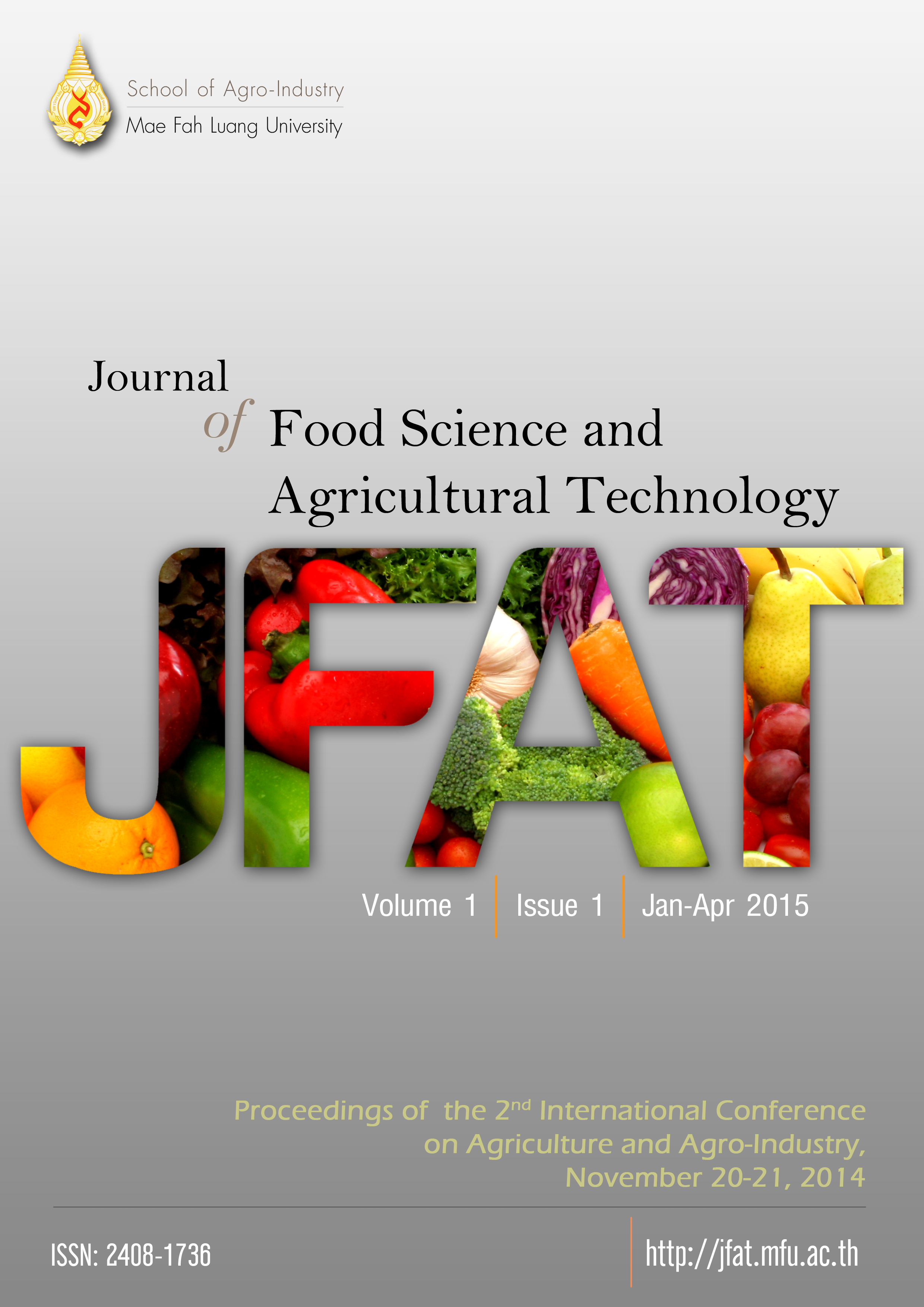Abstract
It is known that UV-C can delay senescence and also influence the accumulation of certain bioactive compounds in fruit. Despite the effects of UV-C in some fruits having been clearly found, there are still shortcomings within the treatment, which should be addressed. The effects ofUV-C irradiation on ripening quality and antioxidant capacity of Nam Dok Mai Si Thong mangoes were investigated. Mango fruit at commercial stage was treated with UV-C (4.93 kJ/m2) then stored at 14 oC and 90% relative humidity for 20 days. A significant (p<0.05) color by L*, a*, and hue values difference existed between untreated and treated mango. The UV-C treated fruit had higher a* value but lower L* and hue appeared as blackened lenticel and skin browning on its peel. However, the application of UV-C did not significantly affect respiration rate, texture, total soluble solids, and titratable acidity. Antioxidant capacity measured as total phenolic compounds, DPPH, and FRAP were decreased after UV-C treatment compared to control. This study suggested that at the investigated dose, UV-C was not suitable to be applied in conserving Nam Dok Mai Si Thong and did not increase antioxidant capacity, thus further evaluation on the efficacy of UV-C in mango, both in flesh and peel is required. In addition, the combination of UV-C irradiation with other physical or chemical treatment, which probably could give better ripening quality in mango especially to reduce its browning effect, should be further investigated.

